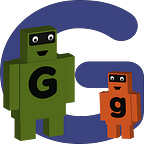by Ryan Hiller
Gamified learning and game-based learning are terms that get thrown around all the time in education, with one often being conflated with the other. Here’s a short primer on the subject. I just returned from the Northwest Council for Computer Education (NCCE) conference in Seattle where both of these topics were discussed in many sessions.
Game-Based Learning
Game-based learning is when you play a game to learn something. It balances learning outcomes with gameplay. Apple and Google Play app stores are full of game-based learning apps. Mainstream games that were not intended to be educational can also be used. Minecraft is a great example of a game that is now heavily used for educational purposes, but was not originally intended for that use. Lastly, the games don’t need to be electronic. Board games, card games, and dice games are all valid candidates as well.
Examples:
- DragonBox: This teaches algebra through a game where you are raising a dragon, progressing through the game as you learn various algebraic techniques.
- Safari Photo Africa: Wild Earth: In this first-person photo-shooter, you play as a photographer on assignment in Africa. I use this in my photography class to help provide practice with composition techniques, as well as to discuss the need to study and walk around your subject to find the best shot.
- RoboRally: Again, the games don’t need to be video games. The turn sequence in RoboRally is a perfect example of the Game Loop in programming, so I’ve used RoboRally to help teach the concept.
I use ‘Safari Photo Africa: Wild Earth’ as a game-based way to help teach composition techniques. It allows me to give the students instant feedback in class while they are taking pictures in an interesting and engaging environment. This is, of course, just a supplemental lesson, with most pictures being taken in the real world. Image from Amazon product page.
Gamification
Gamified learning, or gamification, on the other hand, is when the learning process resembles a game. As students (or players) complete lessons they earn points, level-up, earn achievements and awards, and, a key point in effective gamification, the student can try and try again. Other aspects of gamified learning are that learning is scaffolded with increasingly difficult challenges, and there is differentiation between students through player choice and personalization. This can be done manually in any education setting with paper and pencil to track progress, for instance, but there is also software that aids this process. While progress in the learning is gamified, the actual work to complete lessons is not typically a game, and often looks like a traditional lesson.
Examples:
- Rezzly (3D Game Lab): In my classroom I use Rezzly. This system allows me to build quests (lessons) to which the students can then respond. When I accept their response, they earn points (XP). If I reject their response (with feedback), they get a chance to do it again. Once their quest is accepted, new quests become available. Students have agency in their learning, being able to choose which available quests they do and when. Awards, achievements, badges, and leveling are all built into the system.
- Other systems: While Rezzly is the only system I have experience with, other gamification systems exist;Classcraft is one such example, and there are many others, as evidenced by searching on gamified learning management systems. Again, the gamification can all be done manually; a computer system is not necessary to the process.
While having many benefits, neither of these approaches is the be-all and end-all, and must be done appropriately. These concepts were discussed in Online Gaming in the Classroom — What the Research Says, a session at the NCCE conference with Michael Taylor, former Digital Curriculum Specialist at the Center for Game Science, University of Washington. With game-based learning, the game, of course, has to directly support the instructional objectives and should not be a stand alone item. Debriefing and feedback are critical to tie the activities from the game to the intended learning outcome. The gameplay needs to be talked about, analyzed, and understood. You can’t just plop DragonBox or Safari Photo Africa in a student’s lap and expect her to be able to instantly translate what she learns in-game to the real world.
Gamification also has its limitations. If the quests/lessons you create are not-engaging, relevant, and effective, no amount of awards, achievements, or points is going to make a student excited to learn.
Both are just tools that, like any other teaching technique, can be used when appropriate to aid instruction. It takes an effective teacher who knows the students and quality curriculum to get the most out of these ideas.
About Ryan Hiller
Ryan is the technology director of a small school district, a volunteer firefighter and, of course, a geek dad.
